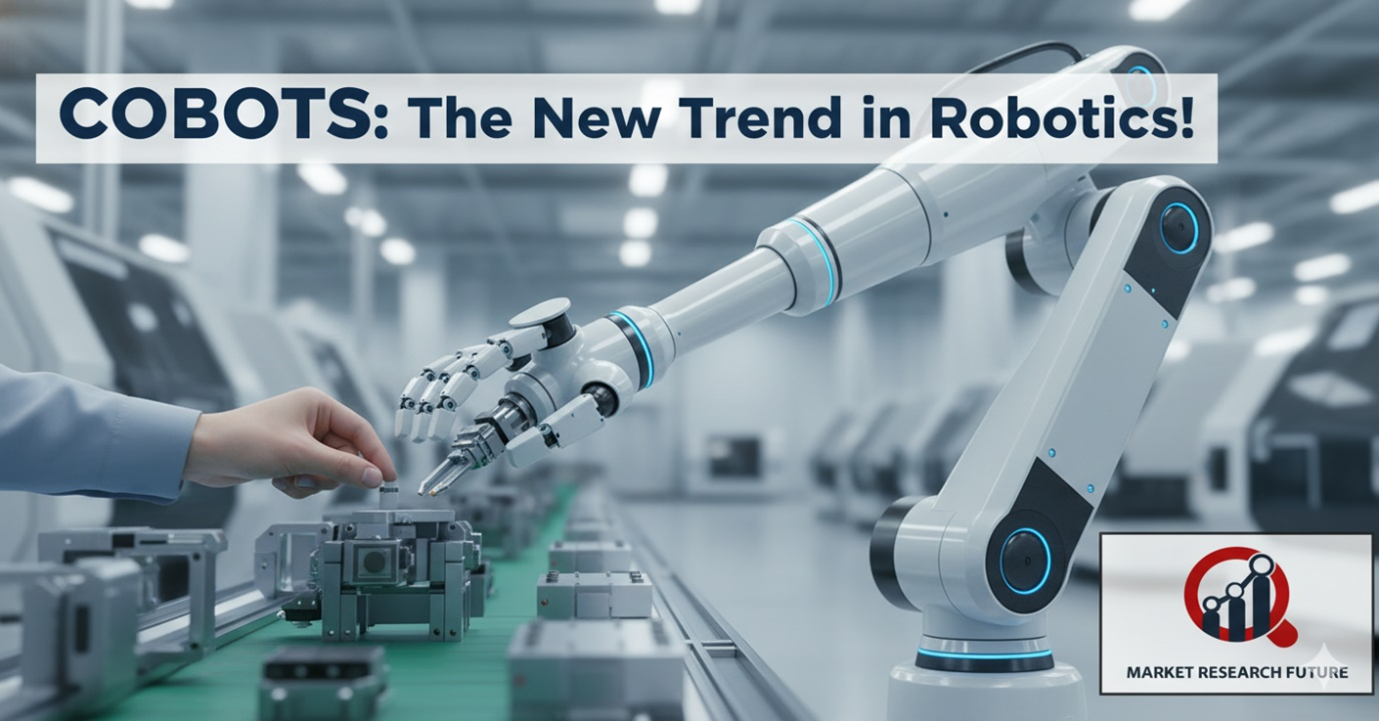
Robotics Market Outlook
The world of robotics is changing faster than ever, and the newest wave of this change is being driven by collaborative robots, or cobots. Cobots are different from regular robots because they are meant to work with people, not behind safety cages or on separate production lines. They combine the accuracy of machines with the flexibility of people. This partnership is a turning point in how businesses around the world see automation. They no longer see it as a way to replace people, but as a smart way to work together to improve safety, efficiency, and innovation.
Robots have come a long way since they were first used in factories and for making cars. Robots are being used in a wide range of fields, including defense, healthcare, aerospace, education, and even food and drink, to make things run more smoothly. Robots are helping with telesurgery and caring for the elderly in the medical field, for example. They provide a level of accuracy and dependability that improves patient outcomes. The defense sector is also using robots for dangerous tasks like mine detection, surveillance, and disaster response, where human safety is at risk.
As businesses look for ways to increase productivity and make the workplace safer, cobots are becoming a game-changing solution. They can do dangerous, repetitive, or labor-intensive tasks so that people can focus on coming up with new ideas, being creative, and making decisions. The rise of cobots means that humans and robots will be able to work together in perfect harmony, getting results that neither could get on their own.
The Revolution in Working Together with Robots
Cobots are different from regular robots because they don't need to be fully automated and don't cost a lot to set up. They are also easy to add to existing systems. Small and medium-sized businesses that used to think automation was out of reach are quickly adopting it. These collaborative systems are small, use little energy, and can handle a variety of tasks without needing a lot of programming changes.
Cobots help with picking, sorting, and packaging in warehouses, for example. This makes it easier for workers and makes the work more accurate. They use high-precision sensors and imaging technologies to make sure that quality is always up to par in factories. Cobots in the food industry do delicate tasks that need both speed and care. Companies can automate important tasks while still keeping a human touch, which is something that full-scale automation often doesn't have.
Wearable robotic exosuits are becoming more popular, which fits with this trend. They help workers lift, move, and do physically demanding tasks safely and quickly. These new ideas not only make people more productive, but they also make them healthier by reducing fatigue and injuries at work.
Problems and chances
The cobot movement is changing industries, but there are still problems to solve. Concerns about data security, following the rules, and making sure that robotic systems can work together are still problems that keep people from using them on a large scale. Many businesses also have trouble with the high costs of setting up and the lack of skilled workers who can run advanced robotic systems.
But technological convergence is helping to solve these problems. The Internet of Things, machine learning, and artificial intelligence are making robots smarter, more intuitive, and easier to use. The move toward open architectures and shared standards is making it easier for cobots from different developers to work together. Open systems changed how we use computers and phones, and now they are about to do the same for the robotics industry.
The Asia-Pacific Edge
The robotics revolution is still centered in the Asia-Pacific region. Countries like China, Japan, and India are quickly adopting collaborative robotics to stay competitive because their electronics and automotive industries are growing quickly. Companies in the area are putting a lot of money into automation to improve productivity, accuracy, and scalability, all while keeping costs low. Nanotechnology and AI are being used together in robotics to drive even more innovation. This is leading to the creation of smarter, smaller, and more powerful cobots that can do complex tasks in a wide range of fields.
Final thoughts
The future of robotics is not about taking over for people anymore; it's about giving them power. The pandemic sped up automation, but it also changed how people and robots can work together. As AI, IoT, and big data analytics get better, cobots are going from being experimental tools to being important coworkers. The era of collaborative robotics has officially begun, with industries around the world embracing this synergy. In this new era, technology will enhance human potential and change the way we work, create, and innovate.